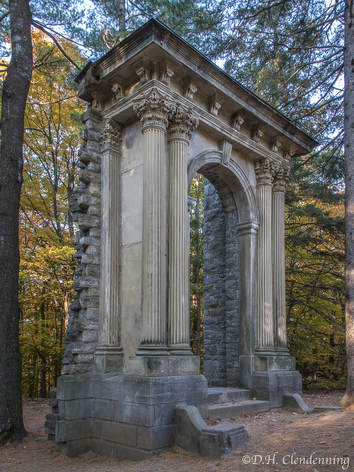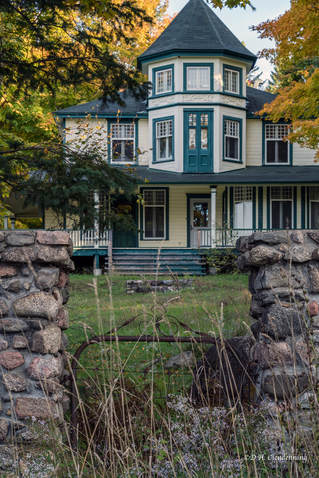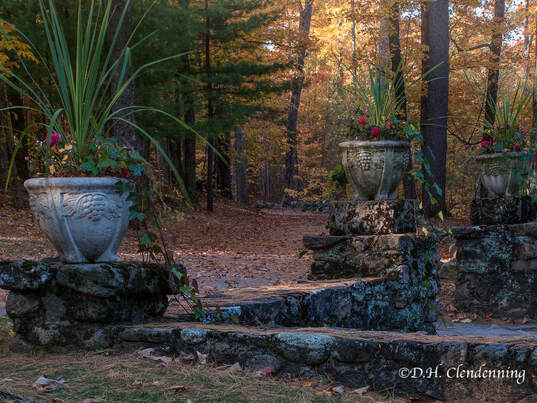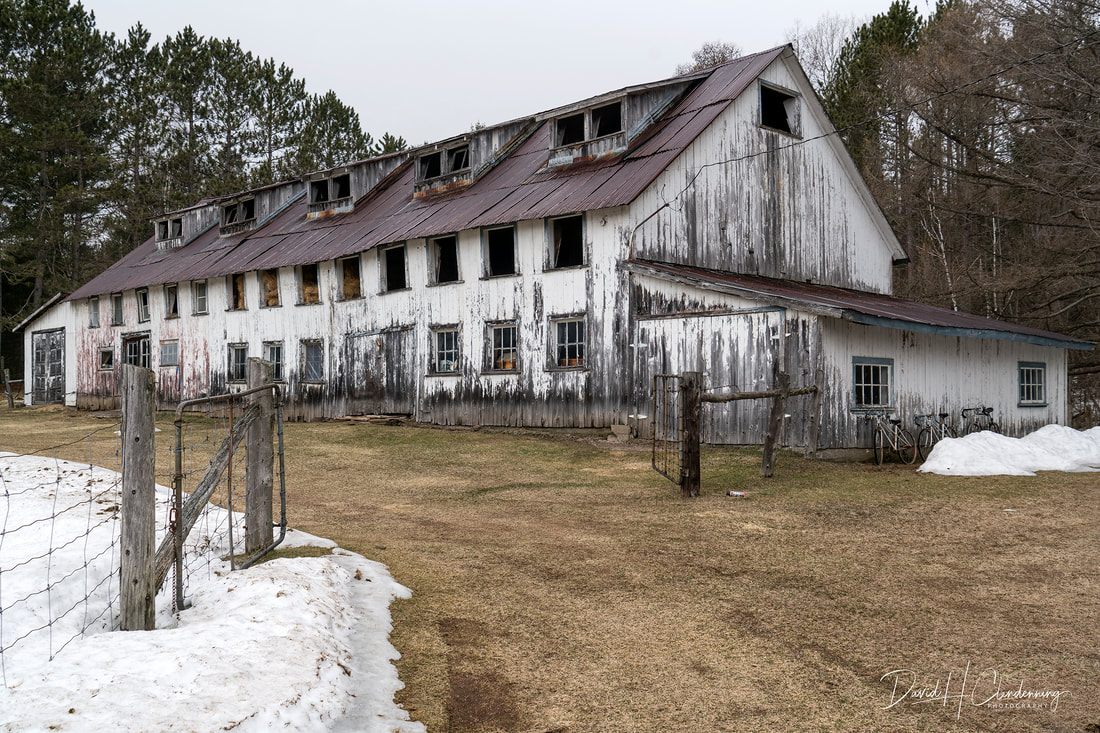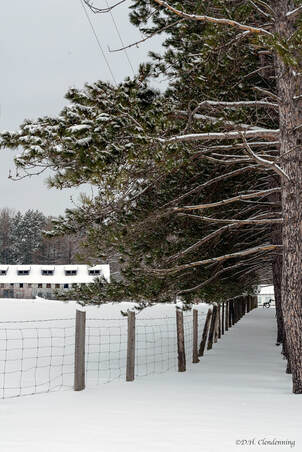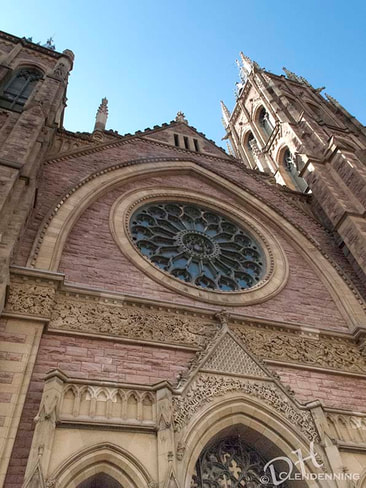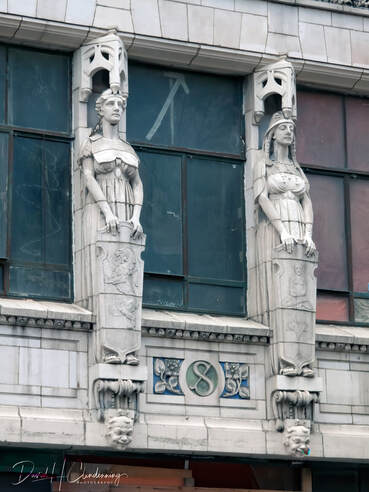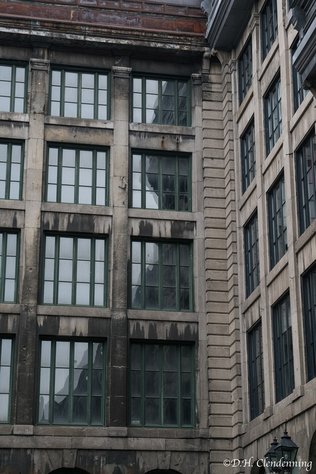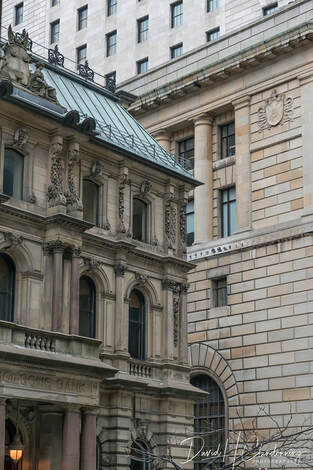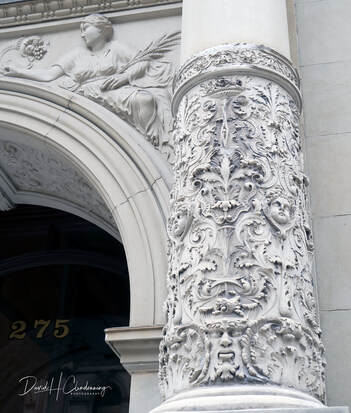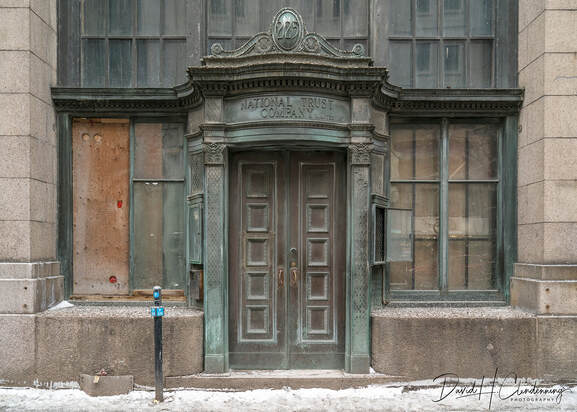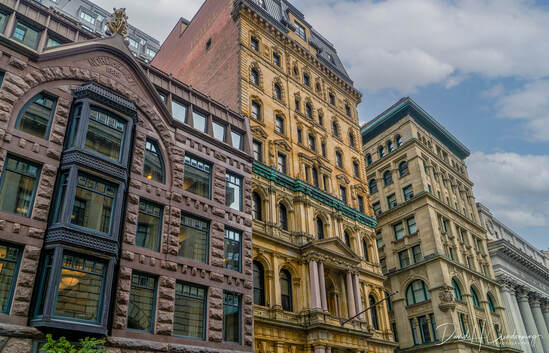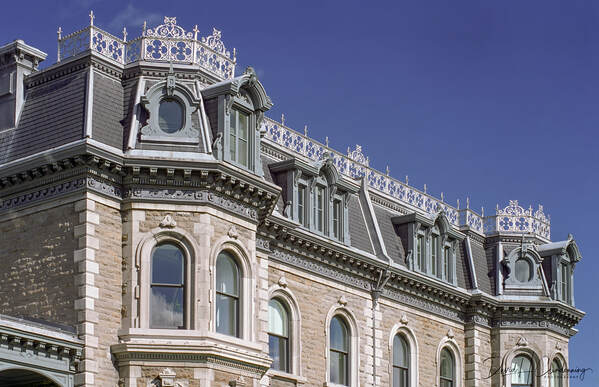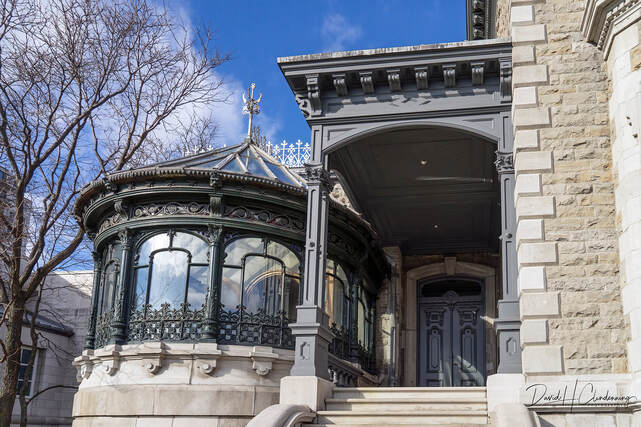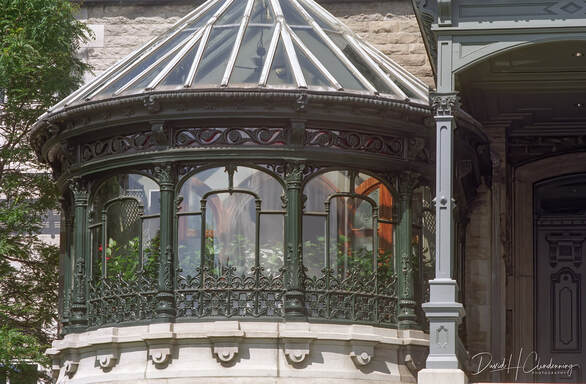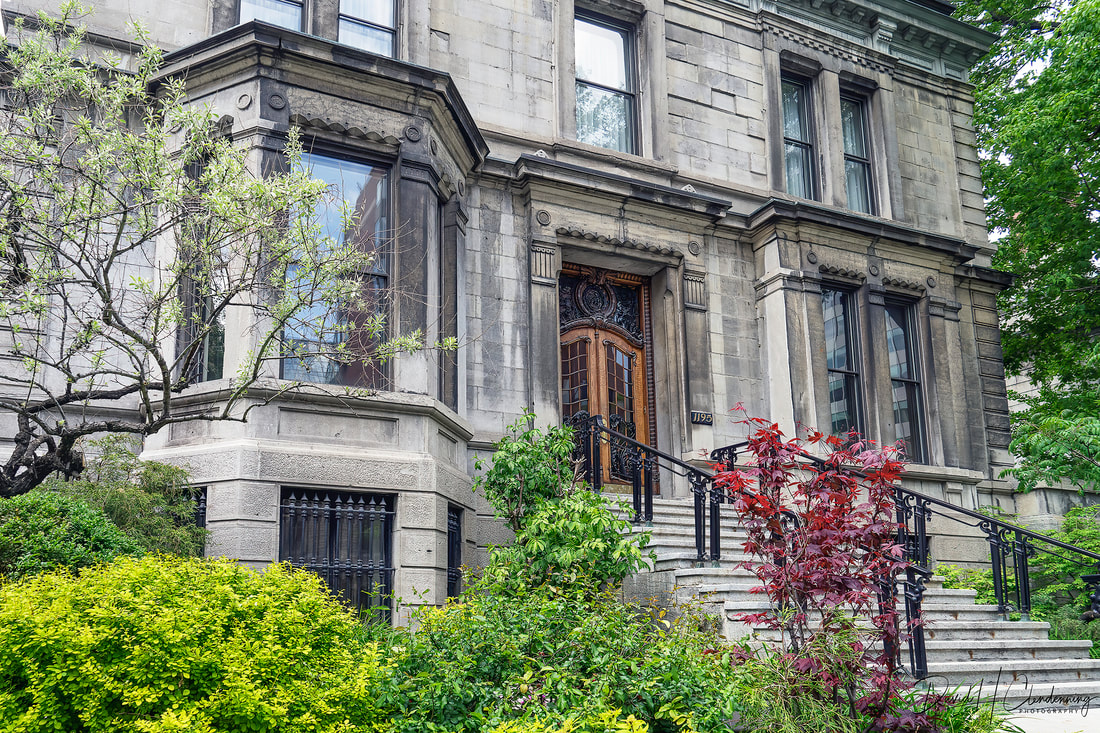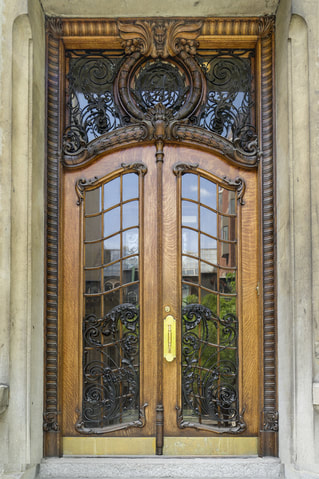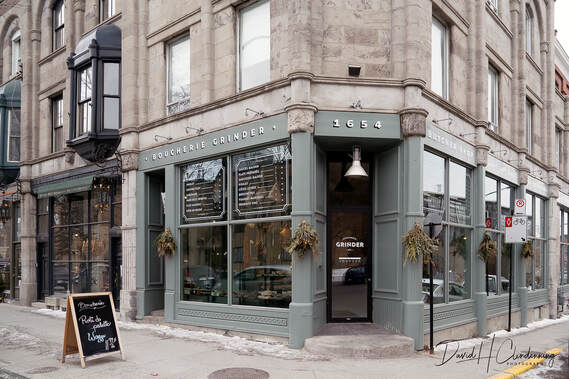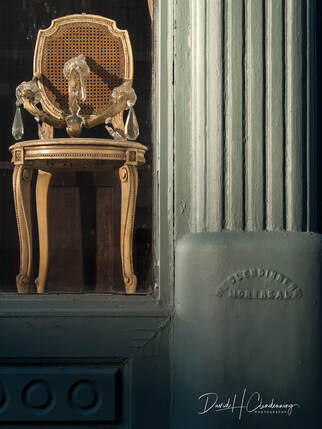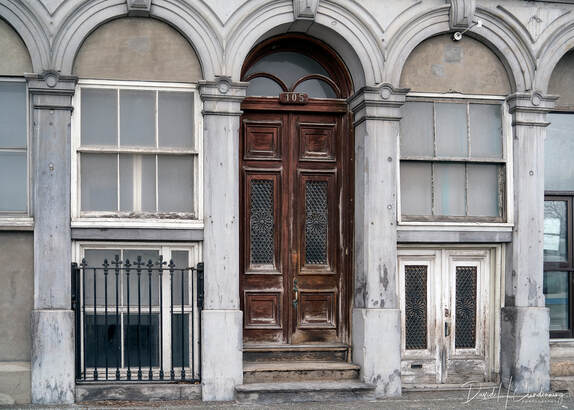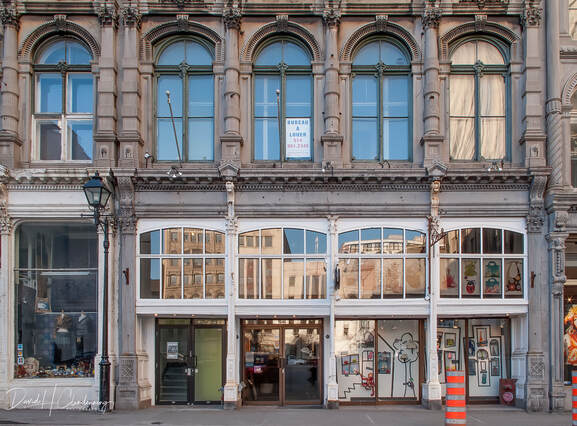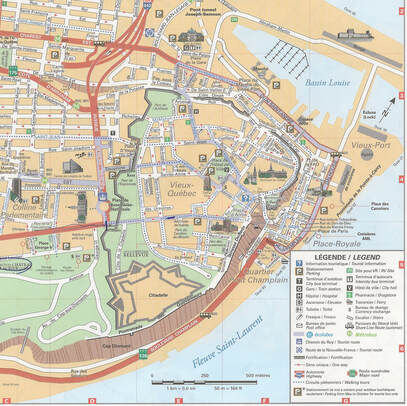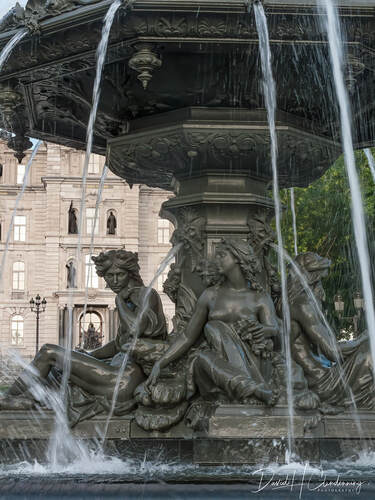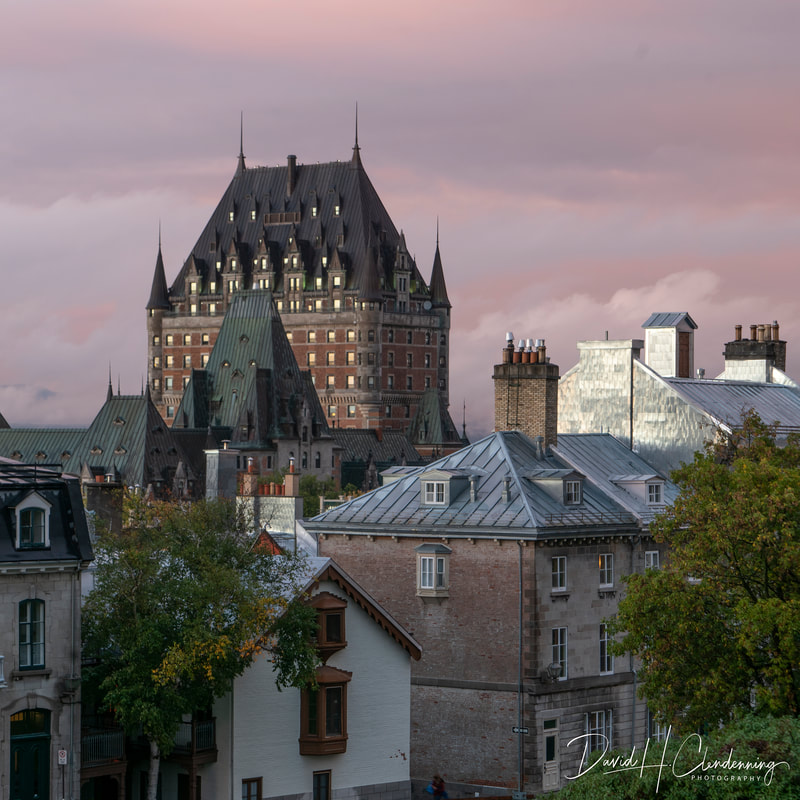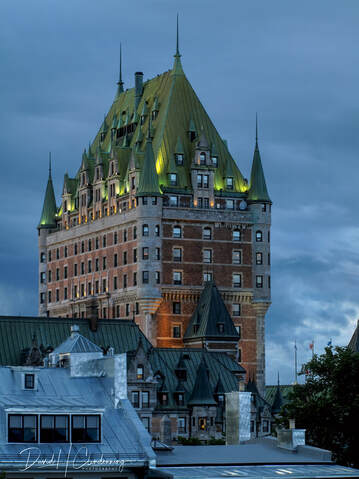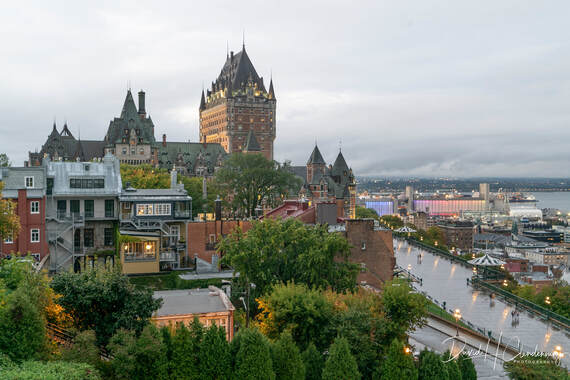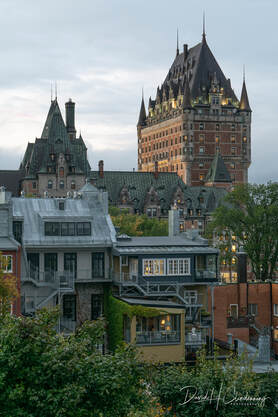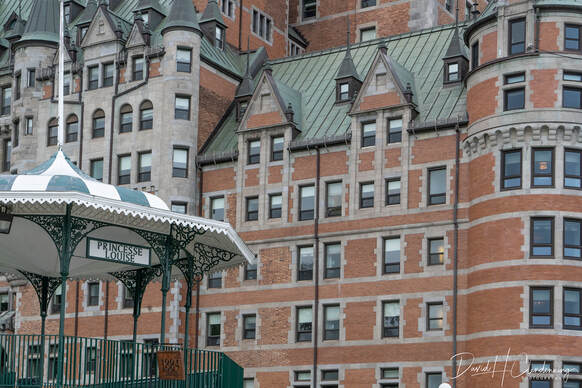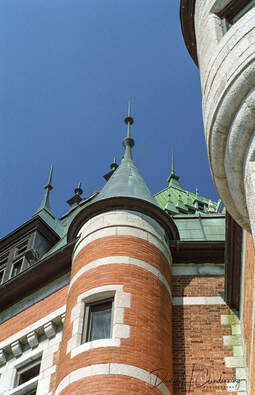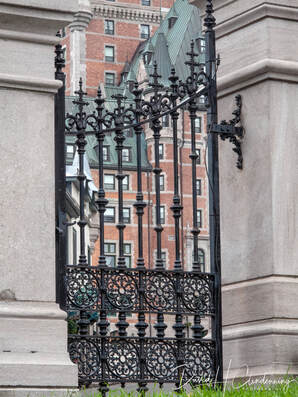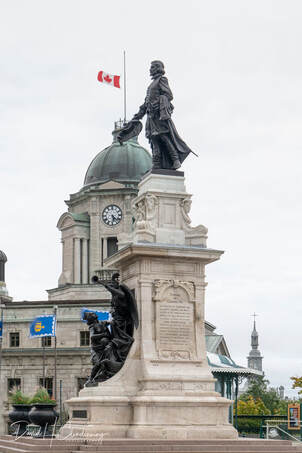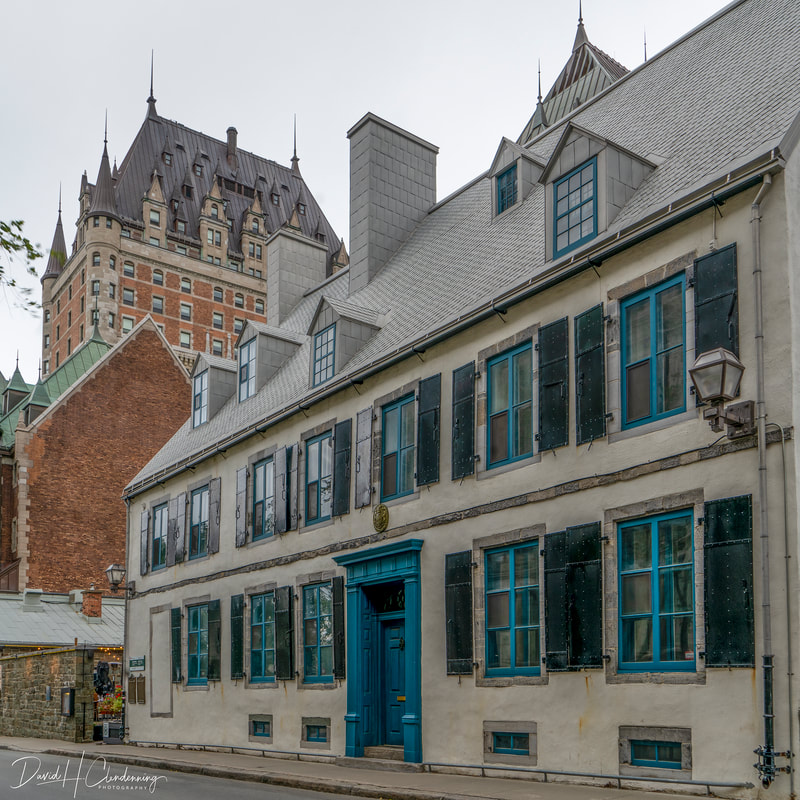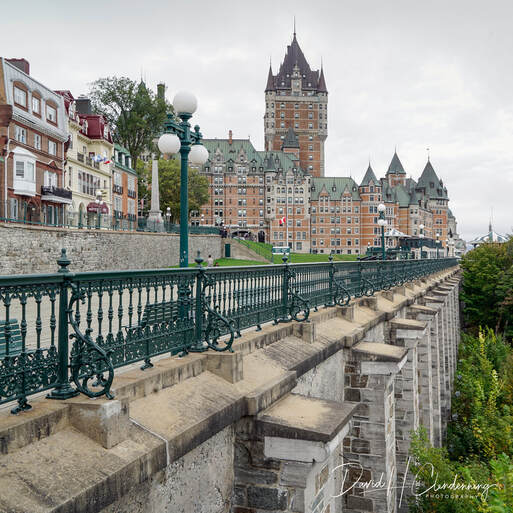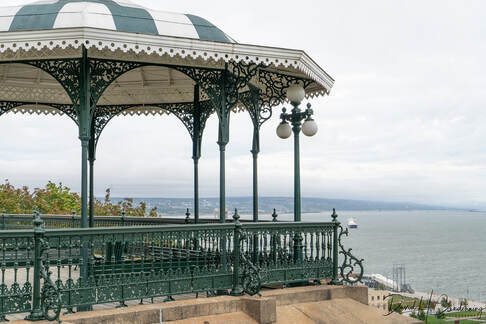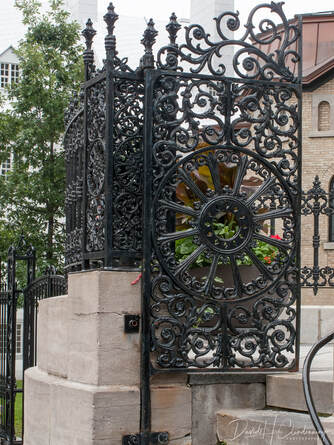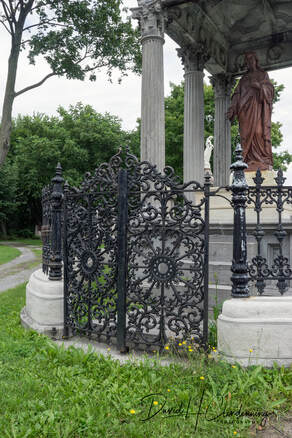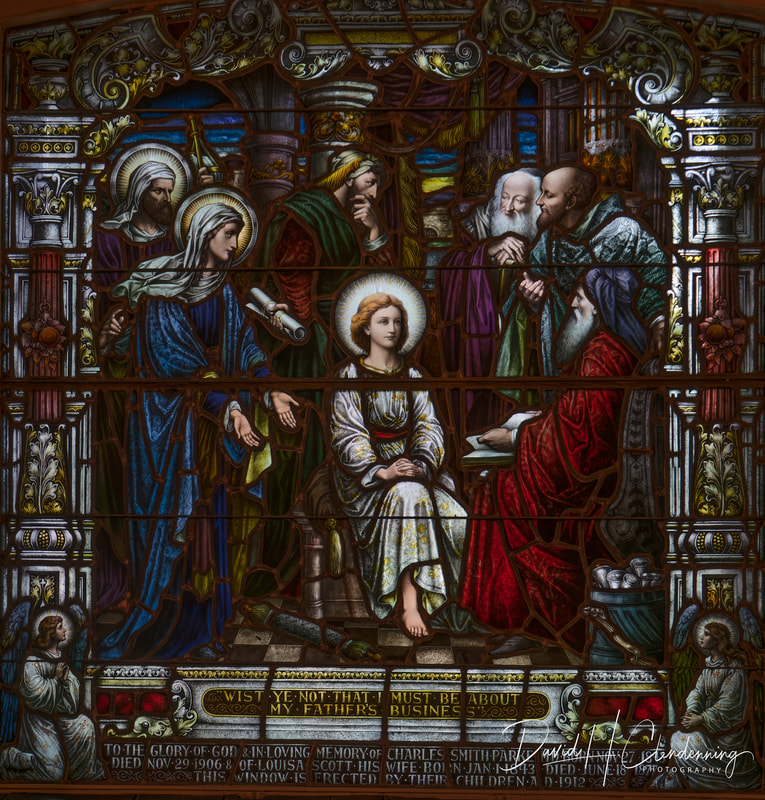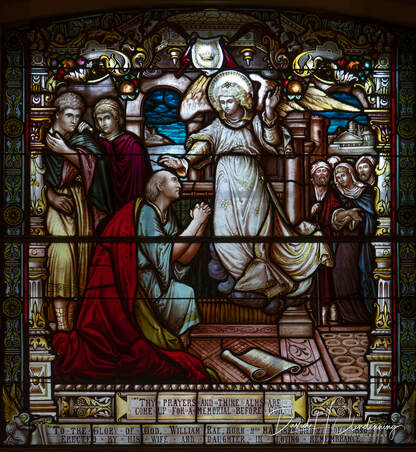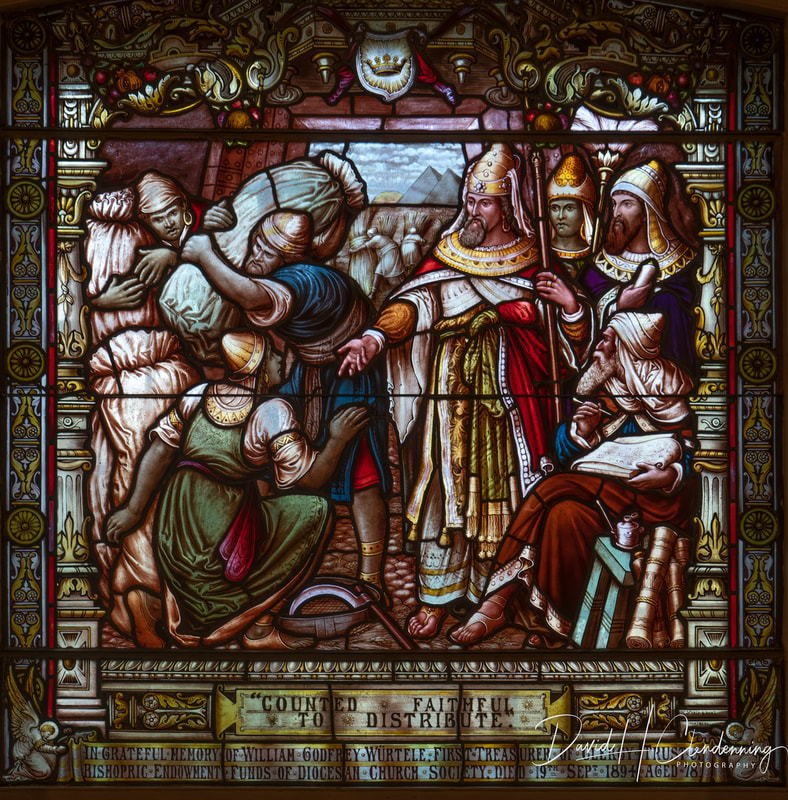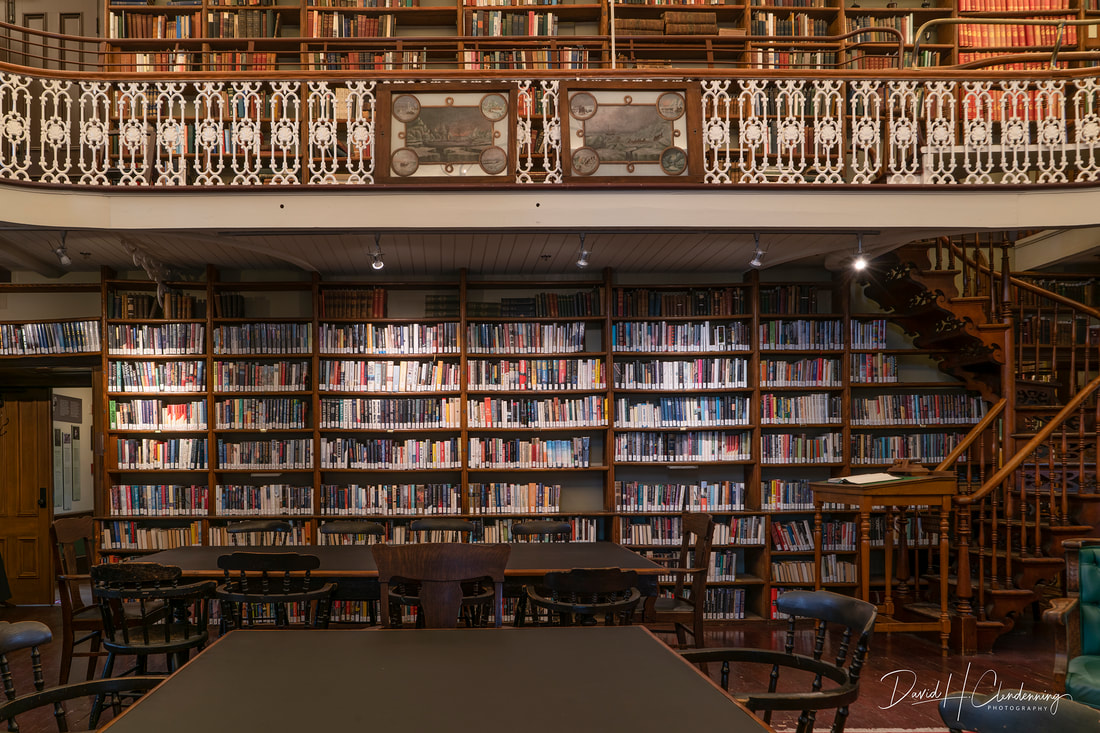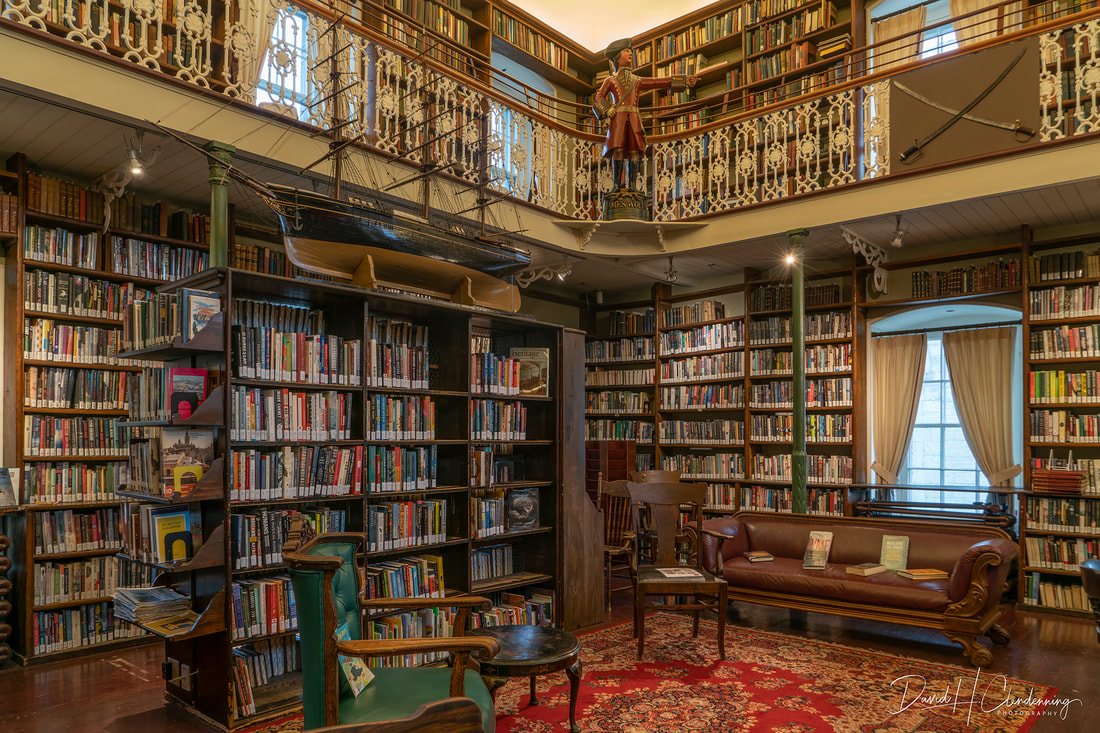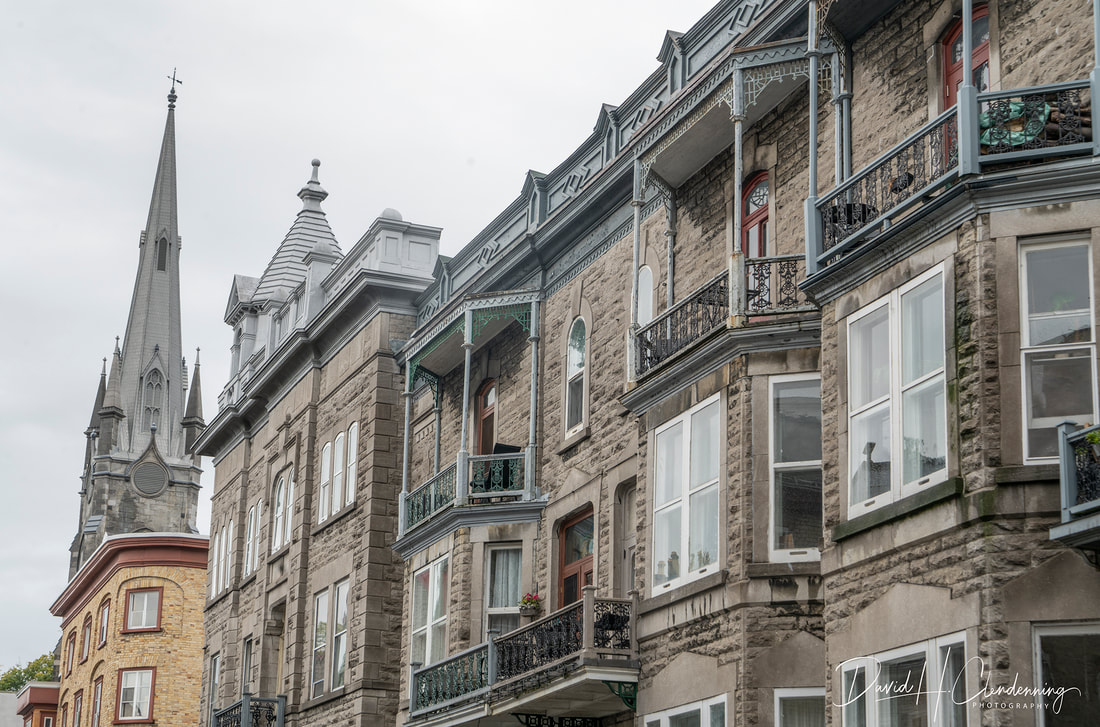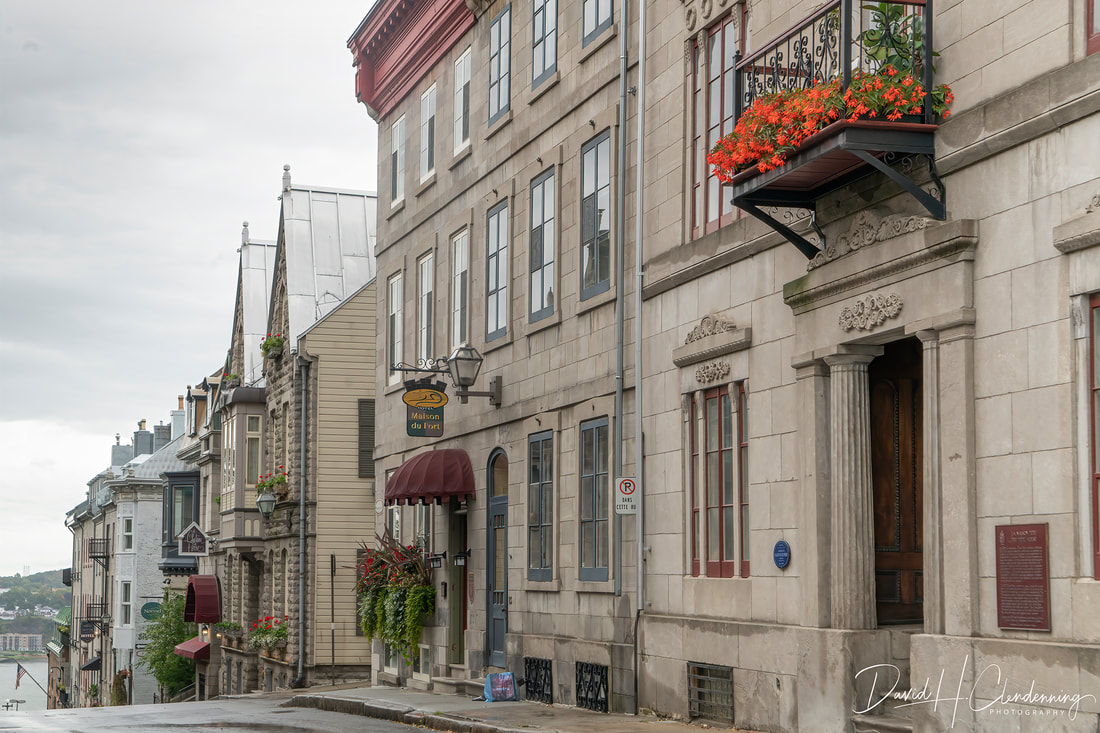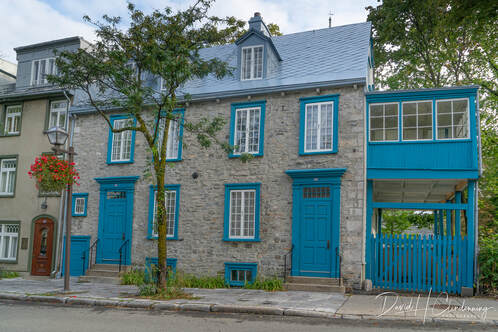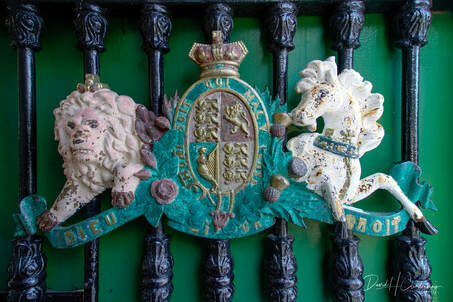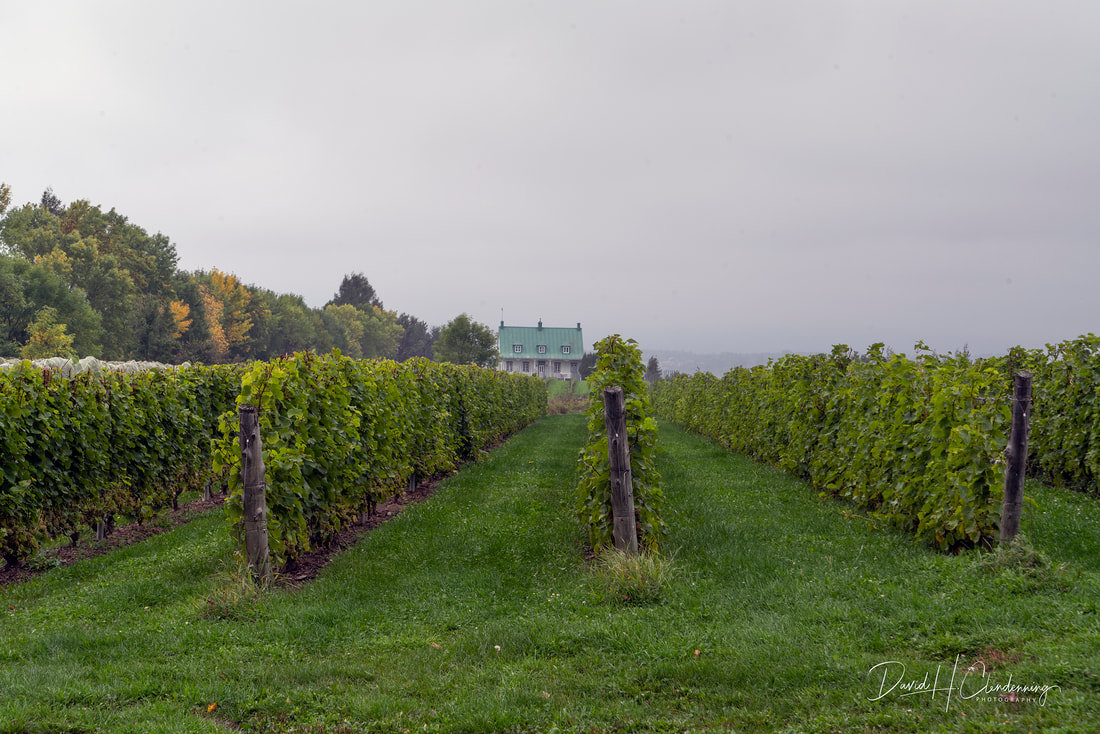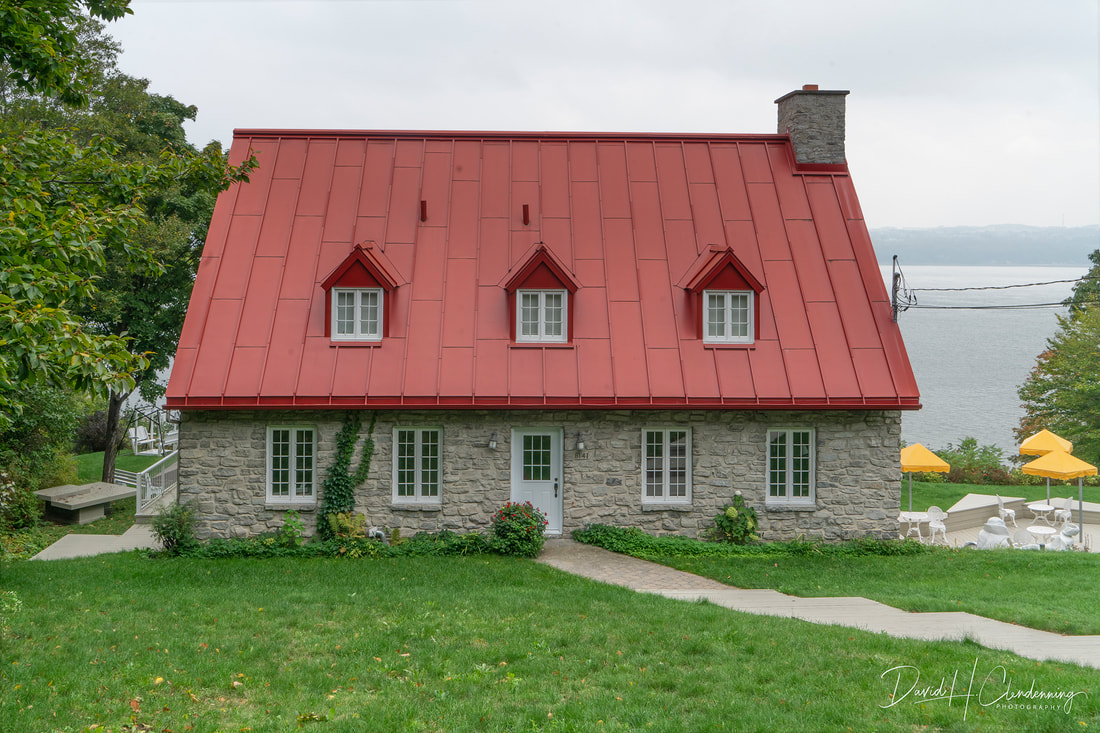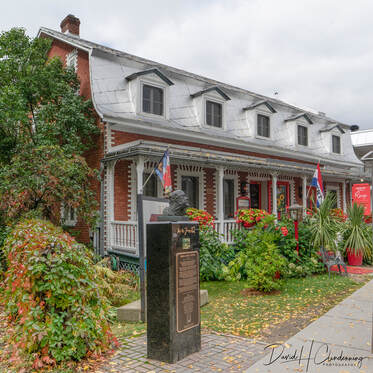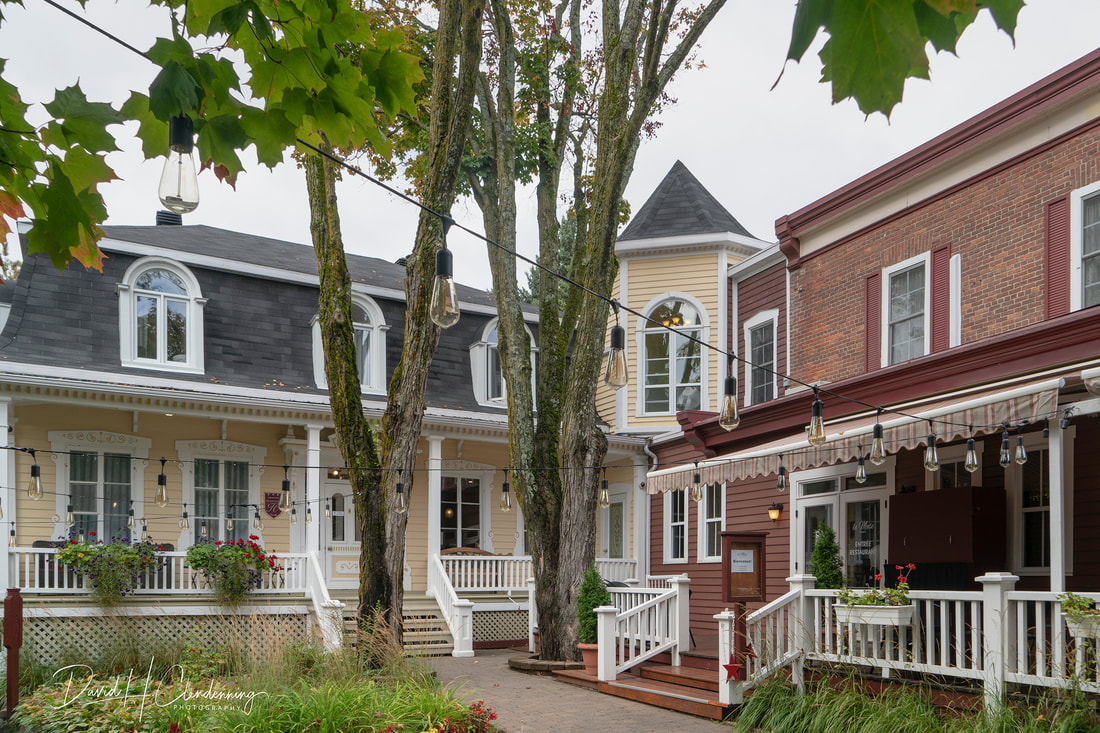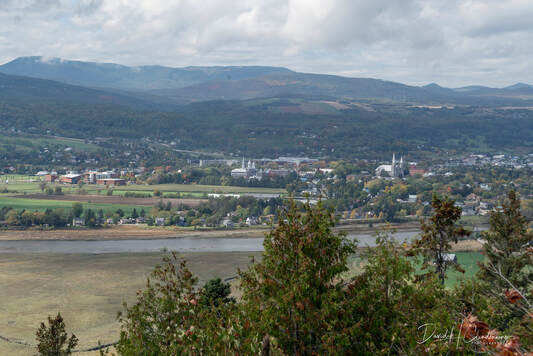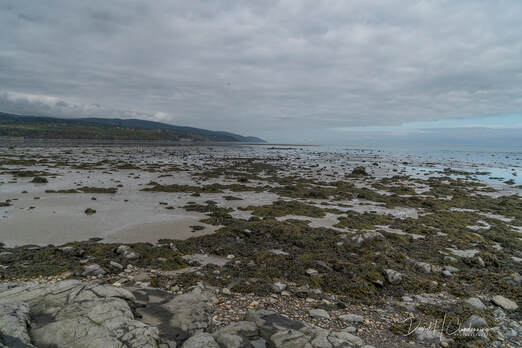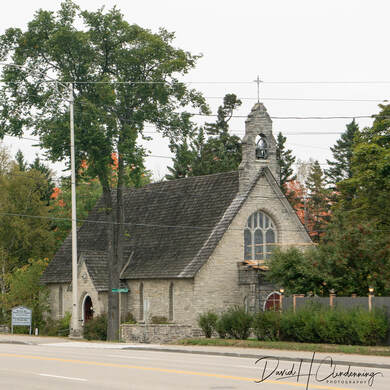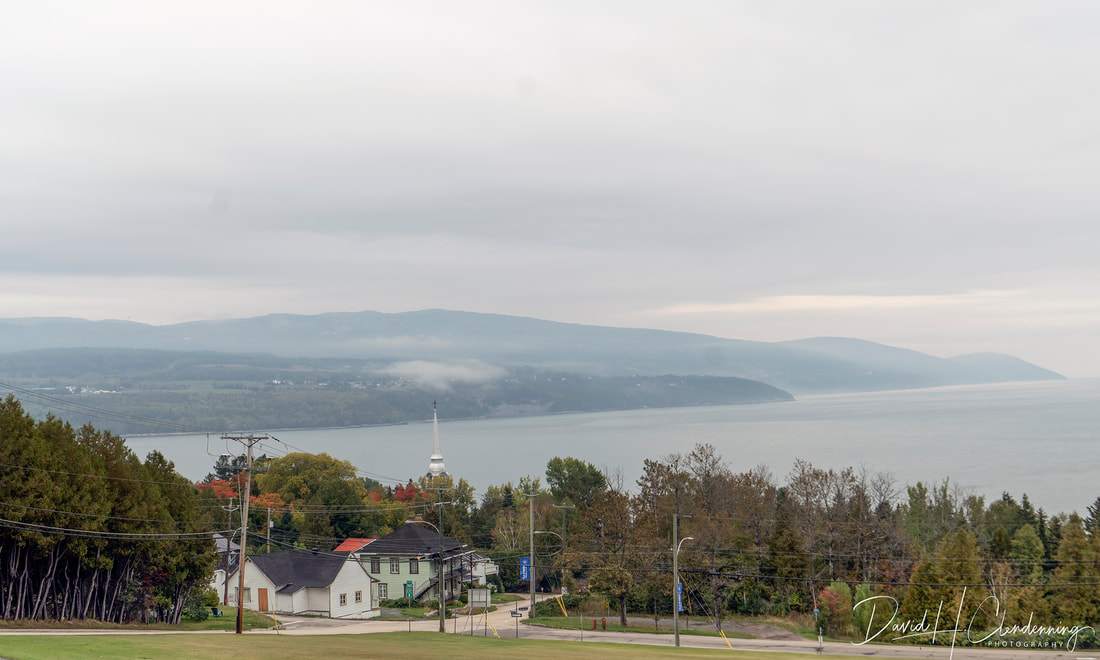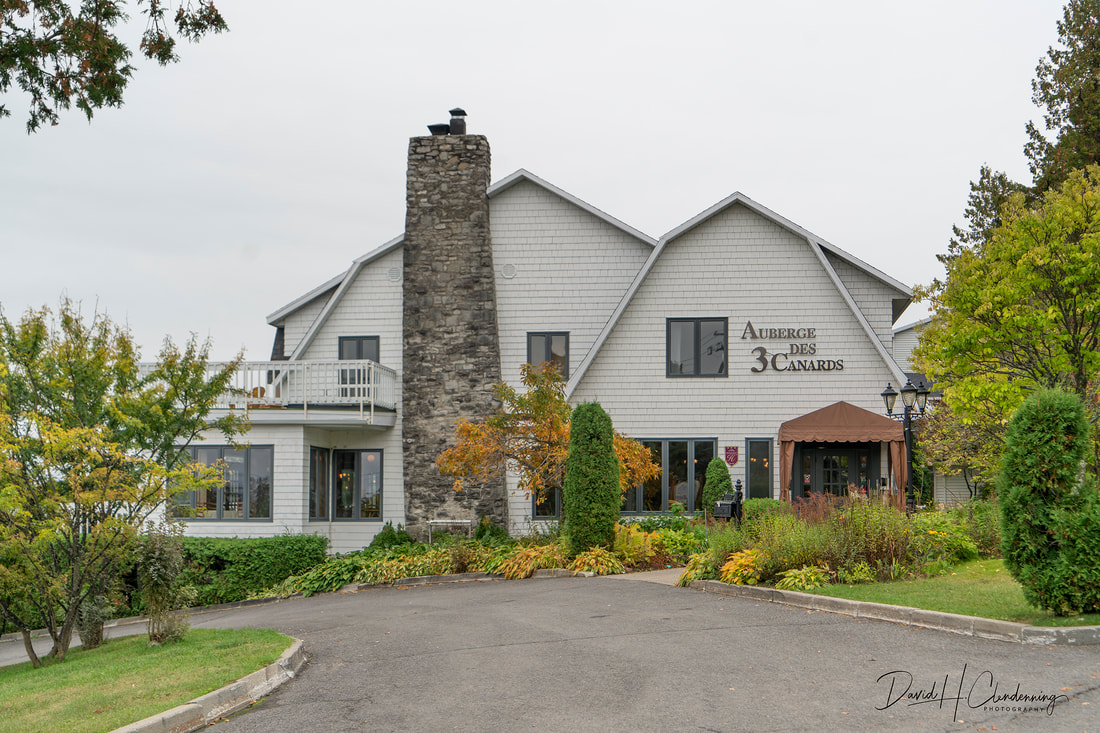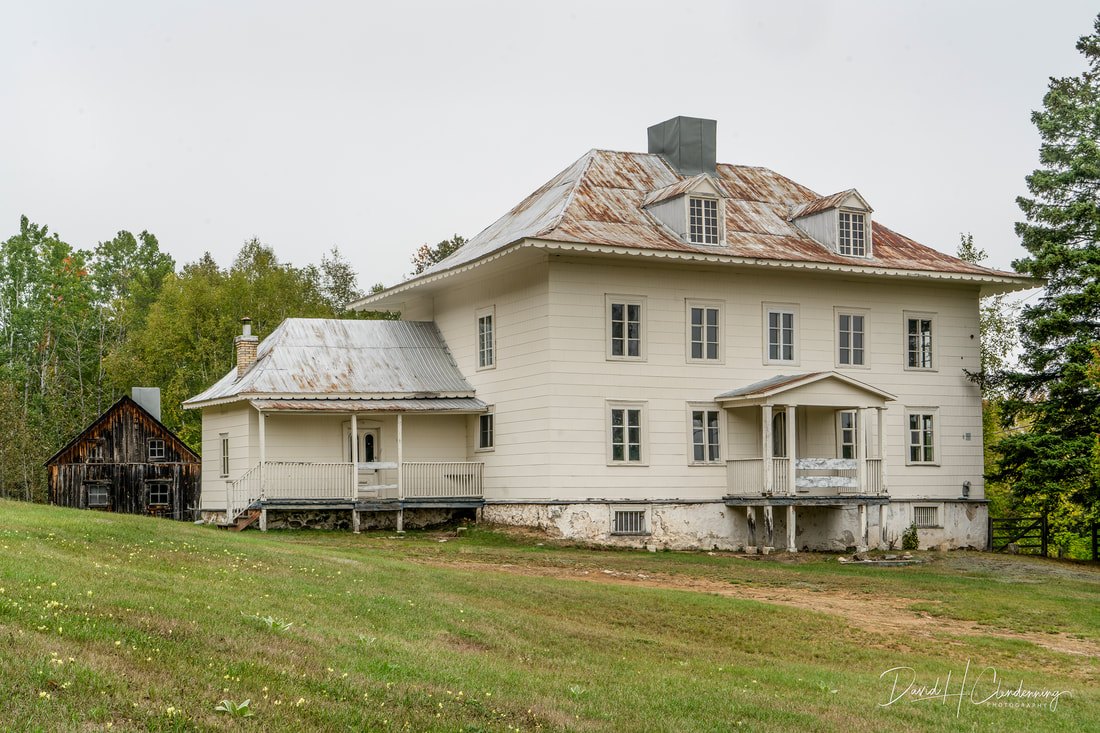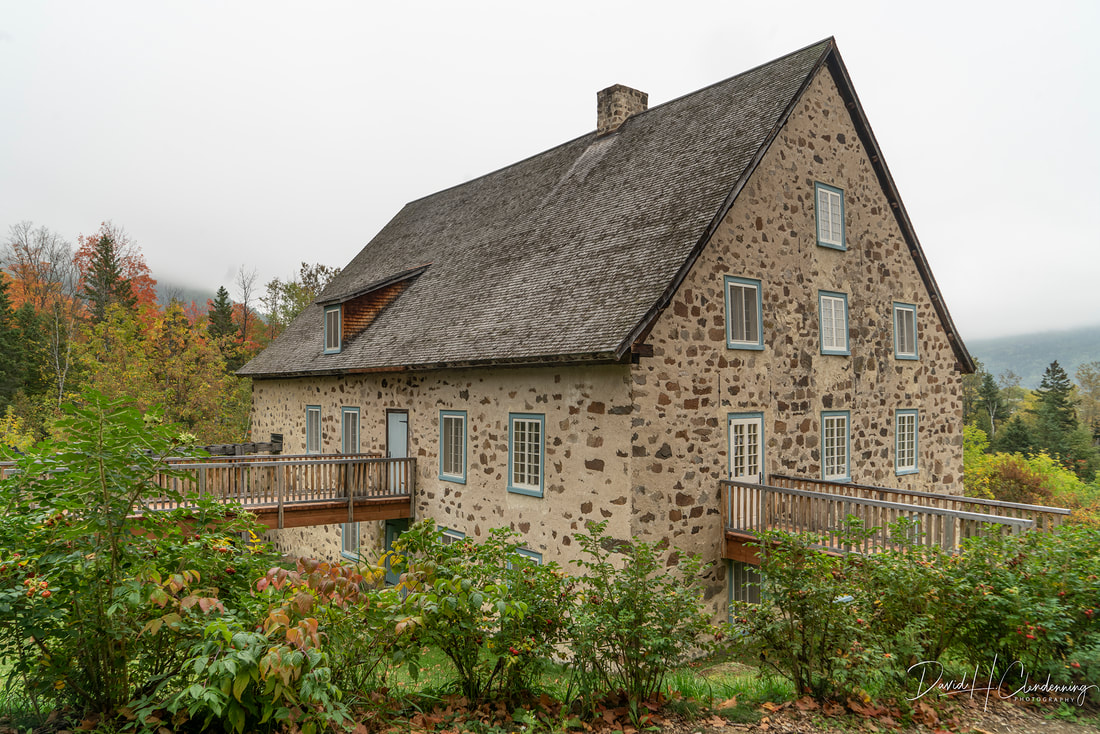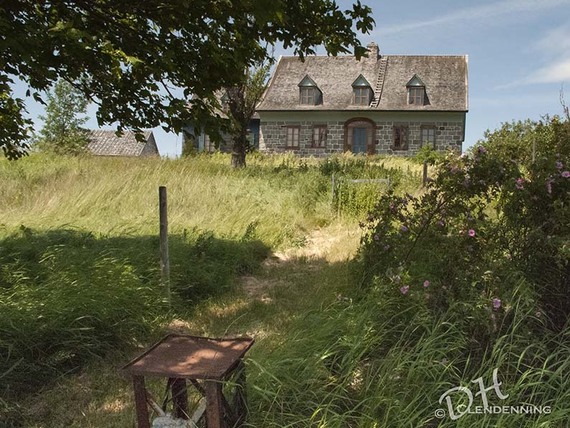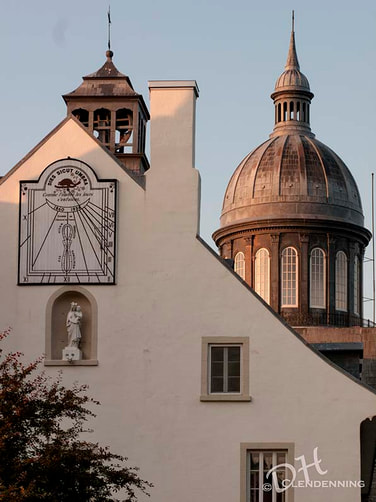Quebec
Gatineau - Gatineau Hills
Mackenzie King Estate - A precious Canadian legacy
This country estate belonged to Canada's 10th and longest-serving prime minister, William Lyon Mackenzie King (1903-1950.
This country estate belonged to Canada's 10th and longest-serving prime minister, William Lyon Mackenzie King (1903-1950.
Pontiac Region along the Ottawa River
Montreal
Elegant Ironwork on Montreal Landmarks
Ironwork by the Wm. Clendinneng foundry, Montreal, 19th and early 20th centuries
Quebec City
|
Fontaine de Tourny - One of the city's must see landmarks
Fontaine de Tourny is an elegant fit with the prestigious surrounding on Quebec City's Parliament Hill. The fountain was designed by Mathurin Moreau in Dijon in 1853 at the Val 'd'sone art foundry, one of six copies in cast iron, one of which was displayed at the Paris World's Fair in 1855. The fountain was awarded a medal of excellence, and the mayor of Bordeaux acquired two copies and had them installed at either end of avenue Allees de Tourny in the centre of the city. In 1960, both fountains were dismantled to make way for an underground parking lot, then sold by weight. One found a new life in Soulac-Sur-mer in the same region, but the other ended up in pieces at an antiques dealer in Saint-Ouen near Paris. In the early 2000, Quebec City businessman Peter Simons discovered it and had the fountain completely restored and then shipped it to his home in Quebec City. In celebration of the city's 400 anniversary in 2008, he presented Quebec City with the extravagant gift which was gratefully accepted by the City of Quebec. It was decided to install the fountain in front of the Quebec's National Assembly on Avenue Honore-Mercier. Words engraved on the plaque fixed to the base of the fountain: "Here, Quebec stands tall, loyal and proud, forever courageous, determined to never die" -- Just like the fountain itself. |
The fountain depicts four children on the upper level celebrating fishing and seafaring, the characters beside the main pool (seen in this photograph) representing the river gods of Ancient Greece and the water nymphs known as Naiads, and the fountain fish, frogs, shellfish, and aquatic plants.
Click on image to enlarge
Chateau Frontenac. & Dufferin Terrace Promenade, 19th century
Three terraces
The first Durham terrace
In 1838, four years after fire attacked the Château Saint-Louis, then-governor of the colony Lord Durham proposed the first terrace, which would bear his name. Fifty metres long and 15 wide, it was built on stone pillars.
The second Durham terrace
The first terrace, which was inaugurated in 1838, was extended several dozen metres toward the Citadelle in 1854. That became the second Durham terrace.
The Dufferin Terrace
During the 1870s, governor general Lord Dufferin proposed an expansion project for the terrace. A strong proponent of the conservation and presentation of the fortifications, Dufferin proposed extending the Durham terrace some 300 meters toward the Citadel. Along with the construction of six kiosks – Plessis, Dufferin, Victoria, Lorne, Frontenac, Princesse Louise – the project saw the light of day in 1879. The same year, the first funicular linking the upper and lower towns was completed. Its upper reach was the basement of the former Château Saint-Louis.
The first Durham terrace
In 1838, four years after fire attacked the Château Saint-Louis, then-governor of the colony Lord Durham proposed the first terrace, which would bear his name. Fifty metres long and 15 wide, it was built on stone pillars.
The second Durham terrace
The first terrace, which was inaugurated in 1838, was extended several dozen metres toward the Citadelle in 1854. That became the second Durham terrace.
The Dufferin Terrace
During the 1870s, governor general Lord Dufferin proposed an expansion project for the terrace. A strong proponent of the conservation and presentation of the fortifications, Dufferin proposed extending the Durham terrace some 300 meters toward the Citadel. Along with the construction of six kiosks – Plessis, Dufferin, Victoria, Lorne, Frontenac, Princesse Louise – the project saw the light of day in 1879. The same year, the first funicular linking the upper and lower towns was completed. Its upper reach was the basement of the former Château Saint-Louis.
A Royal Promenade and boardwalk offers the city's best view of the Saint-Laurence River and Old Quebec.
Originally, terrace known as Durham Terrace; Date of construction of the Durham Terrace: 1838; Extension dates: 1854, 1878-1879; Architects responsible for the second extension of the Durham Terrace: Charles Baillairgé (1826-1906) and William Henry Lynn.
On the wooden plank boardwalk; Against the cast iron balustrade: Floor lamp inspired by Parisian street furniture from the Napoleon III period.
Dufferin Terrace is an extension of the Durham Terrace, itself built-in 1838, on the ruins of the Château St-Louis terrace (destroyed by fire in 1834). The Durham Terrace became so popular that in 1854, it was decided to extend it by 35 meters and modernize it by adding lampposts and a cast-iron railing.
Unchanged since 1879, we owe the terrace as we know it to Charles Baillargé and Governor-General Lord Dufferin. Thanks to them, it goes from 85 to 430 meters, and 6 kiosks were added, including a bandstand.
View looking north with the Chateau Frontenac at left and viewing pavilion at right; Inside the walls of the upper town the rubble of the Château St Louis formed the base of Dufferin Terrace, 1838 (inauguration) - 1878 (creation), a spacious promenade dominated by the Château Frontenac Hotel (1892-1895), a fantastical French Renaissance Revival design by Bruce Price. Charles Baillairgé, Architect and Engineer (1826-1906), designed the cast and wrought iron railings and kiosks on the Terrace.
Dufferin Terrace is one of the great urban schemes of 19th-century Canada. A memorable landmark, the boardwalk featured picturesque green and white kiosks of iron with national emblems beneath the arches. These gazebos overlook Lower Town and the Saint Lawrence River. The six kiosks are named after three former governor generals (Frontenac, Dufferin and Lorne), the first bishop of the Archdiocese of Québec (Plessis), one queen (Victoria) and her daughter (Princess Louise, who was married to Lorne). The national emblems were also in the design of the extensive iron border fence stretching along the terrance.
The first section of the terrace was built on the site of the ruins Chateau St. Louis, built in 1647, which was destroyed by fire in 1834. In 1838 the first boardwalk was build and it was so popular that it had to be lengthened in 1854. Street lamps and iron railings were added. In 1878, the corner stone of the new terrace or extension was laid by Lord Dufferin and the iron railing was kept and made to run the length of the boardwalk. At a later period, it was still further lengthened and the magnificent 200 -foot high boardwalk is now some 1400 feet long. In 1885, the first electric streelamps in North America were switched on here. In 1898 the statue of Champlain was erected at the far end of the boardwalk.
Use of Iron for decorative purposes
New development in construction technology, the publicity surrounding the erection of the Crystal Palace in London in 1851, and current American experiments with cast and wrought iron, architects began to use iron for decorative purposes and to integrate the material into the structural fabric of buildings. Architects now specified the use of iron columns into the walls to keep the structure from shifting. Moreover, architects specified the use of iron columns to support the mezzanine and cast iron for ornamentation. For example, the graceful iron fence and gates enclosing the cathedral of Notre-Dame in Quebec city.
Originally, terrace known as Durham Terrace; Date of construction of the Durham Terrace: 1838; Extension dates: 1854, 1878-1879; Architects responsible for the second extension of the Durham Terrace: Charles Baillairgé (1826-1906) and William Henry Lynn.
On the wooden plank boardwalk; Against the cast iron balustrade: Floor lamp inspired by Parisian street furniture from the Napoleon III period.
Dufferin Terrace is an extension of the Durham Terrace, itself built-in 1838, on the ruins of the Château St-Louis terrace (destroyed by fire in 1834). The Durham Terrace became so popular that in 1854, it was decided to extend it by 35 meters and modernize it by adding lampposts and a cast-iron railing.
Unchanged since 1879, we owe the terrace as we know it to Charles Baillargé and Governor-General Lord Dufferin. Thanks to them, it goes from 85 to 430 meters, and 6 kiosks were added, including a bandstand.
View looking north with the Chateau Frontenac at left and viewing pavilion at right; Inside the walls of the upper town the rubble of the Château St Louis formed the base of Dufferin Terrace, 1838 (inauguration) - 1878 (creation), a spacious promenade dominated by the Château Frontenac Hotel (1892-1895), a fantastical French Renaissance Revival design by Bruce Price. Charles Baillairgé, Architect and Engineer (1826-1906), designed the cast and wrought iron railings and kiosks on the Terrace.
Dufferin Terrace is one of the great urban schemes of 19th-century Canada. A memorable landmark, the boardwalk featured picturesque green and white kiosks of iron with national emblems beneath the arches. These gazebos overlook Lower Town and the Saint Lawrence River. The six kiosks are named after three former governor generals (Frontenac, Dufferin and Lorne), the first bishop of the Archdiocese of Québec (Plessis), one queen (Victoria) and her daughter (Princess Louise, who was married to Lorne). The national emblems were also in the design of the extensive iron border fence stretching along the terrance.
The first section of the terrace was built on the site of the ruins Chateau St. Louis, built in 1647, which was destroyed by fire in 1834. In 1838 the first boardwalk was build and it was so popular that it had to be lengthened in 1854. Street lamps and iron railings were added. In 1878, the corner stone of the new terrace or extension was laid by Lord Dufferin and the iron railing was kept and made to run the length of the boardwalk. At a later period, it was still further lengthened and the magnificent 200 -foot high boardwalk is now some 1400 feet long. In 1885, the first electric streelamps in North America were switched on here. In 1898 the statue of Champlain was erected at the far end of the boardwalk.
Use of Iron for decorative purposes
New development in construction technology, the publicity surrounding the erection of the Crystal Palace in London in 1851, and current American experiments with cast and wrought iron, architects began to use iron for decorative purposes and to integrate the material into the structural fabric of buildings. Architects now specified the use of iron columns into the walls to keep the structure from shifting. Moreover, architects specified the use of iron columns to support the mezzanine and cast iron for ornamentation. For example, the graceful iron fence and gates enclosing the cathedral of Notre-Dame in Quebec city.
Sections of the Dufferin Terrace Iron fence are attributed to the Wm. Clendinneng Foundry, Montreal, 19th century
Dufferin Terrace derives its name from Lord Dufferin, formerly governor of Canada, at whose suggestion it was built on the grounds occupied by the old Chateau St. Louis, destroyed by fire in 1834. On the boardwalk platform are to be seen two Russian guns captured by the English troops in one of the battles of the Crimean War. It was electrified in 1885 and, shortly thereafter, ice slides were set up. The terrace's kiosks and public benches introduced Quebecers to urban fixture making to those found on Parisian boulevards and created a lively, bustling atmosphere.
These photographs show Dufferin Terrace with its ornamental iron railings and row of picturesque kiosks along the footage
Dufferin Terrace in Old Quebec City rapidly became a focal point of city life.
Original Dufferin Terrace: First 60 feet began under Lord Durham in 1838, next to the Saint-Louis Fort, which Champlain erected at the top of the cliff in 1620. In 1854 a further 170 feet was added (Henry Hatch, general contractor), and a final 1400 feet up to the Citadel Wall was completed in 1879. The kiosks were designed by Charles Baillairge, ca. 1900. The terrace owes its name to Lord Dufferin, the popular 3rd governor general of Canada from 1872 to 1878. The is one of the few people who fought against the demolition of the fortifications, which we can still admire nowadays all around the city.
Original Dufferin Terrace: First 60 feet began under Lord Durham in 1838, next to the Saint-Louis Fort, which Champlain erected at the top of the cliff in 1620. In 1854 a further 170 feet was added (Henry Hatch, general contractor), and a final 1400 feet up to the Citadel Wall was completed in 1879. The kiosks were designed by Charles Baillairge, ca. 1900. The terrace owes its name to Lord Dufferin, the popular 3rd governor general of Canada from 1872 to 1878. The is one of the few people who fought against the demolition of the fortifications, which we can still admire nowadays all around the city.
Other important iron elements in Quebec City
The stone and iron fence which enclosed Venner's plot at the Saint-Charles cemetery was put up in 1857-8 and is an exact match with the Charles Baillairge's fence in front of Notre-Dame Cathedral of the same date.
Stained Glass in the English Cathedral of the Holy Trinity, Quebec City (c.1800-1804), Palladian architecture.
See more stained glass at Stained Glass Canada section
Morrin College/Former Quebec Prison
Isle d'Orlean
Charlevoix Region along the North Shore
Baie Saint-Paul
La Malbaie, Charlevoix Region
La Malbaie region of Charlevoix was once the vacation province of wealthy American families and international celebs like Mary Pickford, Charlie Chaplin, and the king of Siam. A young William Howard Taft visited here is 1892 and remarked on its wonderful air quality, and made it his destination for the rest of his life. The French-Canadian villages known collectively as Murray Bay were the nexus of the "Newport of the North" and enjoyed a lively heyday from the 1870s into the 1950s.
Murray Bay Protestant Church, La Malbaie - The Tiffany Stained Glass
The Church's famous Tiffany stained-glass is dedicated to the memory of Dr. Samuel Beach Jones (1842-1910), a physician from New York City and a summer resident of Murray Bay. The satined-glass made by Louis C. Tiffany was installed in 1915, thanks to Rose Tiffany, owner of the La Rose on the Boulevard des Falaises (on road to the Fairmont Manoir Richleau Hotel) . This is one of only three sites in Canada having Tiffany stained-glass.
The Church's famous Tiffany stained-glass is dedicated to the memory of Dr. Samuel Beach Jones (1842-1910), a physician from New York City and a summer resident of Murray Bay. The satined-glass made by Louis C. Tiffany was installed in 1915, thanks to Rose Tiffany, owner of the La Rose on the Boulevard des Falaises (on road to the Fairmont Manoir Richleau Hotel) . This is one of only three sites in Canada having Tiffany stained-glass.
Near Remy, Charlevoix
Near the Mouth of the St. Lawrence River
|
The Ursuline Monastery at Three Rivers
From 1697, the year of the arrival of their at Three Rivers, until 1700, the Ursulines lived in the house of Governor de Ramezay on the Platon, and in the latter year they secured the site which they still occupy. The monastery was burned in 1752 but rebuilt in the following year. Fire again visited it, this time in 1806, and in 1807 it was reconstructed with the same walls. |
